
Since its inception, cloud computing has experienced significant growth. Quickly, it has become the first port of call for businesses to achieve greater agility, scalability, flexibility, and cost efficiency among other perks, making it a one-stop shop for numerous enterprise advantages. Better still, organisations have full autonomy over their cloud initiatives by choosing the hybrid or multi-cloud architectures that work for their unique needs. In turn, businesses can enjoy only the features they actually want from their vendors without being subjected to vendor lock-in.
While the benefits are reason enough to jump on the cloud bandwagon, the latest catalyst in cloud adoption is the COVID-19 pandemic. With digital dependency at an all-time high, the spotlight on cloud computing technologies is shining brighter than ever. Businesses can use cloud to centralise data from disparate sources, granting employees access to it from the comfort and safety of their own homes. For the remaining companies that have not yet begun their cloud journey, the pandemic will be a lesson learnt as to why cloud is necessary in a business continuity plan.
With that said, the post-crisis world will be more cloud-driven than ever before, giving rise to Gartner’s earlier prediction that “by 2020, a corporate ‘no-cloud’ policy will be as rare as a ‘no-Internet’ policy.”
However, as advantageous as cloud comes across, it does echo an old saying: if something sounds too good to be true, then it probably is. That’s not to say that cloud doesn’t deliver on its promise – on the contrary, most enterprises today are thriving with cloud under their belt – but the benefits of cloud often overshadow the significant challenge of the actual transition to it.
Don’t let the benefits cloud your judgement
Cloud can be quite the double-edged sword. While the end result is blissful, the journey to being cloud-driven can render it just a mirage. Cloud confronts businesses with numerous concerns that can be difficult to shake off. Firstly, with cybersecurity becoming an increasingly ominous topic in enterprise IT, the pressure is on for businesses to strike the right balance between giving employees remote access to applications while also ensuring watertight security and that regulatory requirements are met.
Another major challenge is data integration, which refers to the process of collecting data from disparate sources to provide businesses with actionable information. In doing so, you can enjoy an unified view of business performance that provides you with useful insights at a glance. However, if your data is siloed and you’re having to look in multiple places to find it, you simply cannot attain such obvious insights. What’s more, you can’t integrate your data effectively in the traditional ways (such as through ETL) with data silos – though you also wouldn’t want to, as it’s costly and time consuming to do so.
Furthermore, cloud has inherent latency issues. When moving critical applications to the cloud, businesses often experience downtime related to enormous amounts of re-coding involved in connecting all of their data silos. If companies choose to have a hybrid cloud architecture with part of their data on-premises and rest in the cloud they often facepoor performance after their migration. Worse still, particularly unlucky migrators may find that some apps don’t work at all post-migration and have to move it back to the data centre, resulting in wasted time and money.
Businesses also cite concerns regarding lack of cloud-specific skill sets as a significant hurdle, as well as cloud spend. Not only that, but migration could necessitate downtime, which can be extremely costly in terms of money and customer satisfaction. However, with all signs pointing to the cloud, it’s clear that businesses need to overcome these challenges and embark on the cloud journey if they don’t want to meet challenges later down the line.
Doing cloud better with Data Virtualisation
In the quest to fully embrace the cloud, businesses need data virtualisation in their arsenal. As always, leading the way in this arena is Denodo, a company with a solution portfolio so rich that it’s no surprise they can answer your cloud woes. The Denodo Platform can pacificy a business’s many cloud-related concerns in one go, making it a highly recommended offering for a worry-free cloud journey.
As a refresher, we must quickly recap what data virtualisation is (if you missed it, make sure to read our introduction to data virtualisation with Denodo here). Denodo defines data virtualisation as “a logical data layer that virtually integrates all enterprise data siloed across the disparate systems, manages the unified data for centralized security and governance, and delivers it to business users in real time.”
The Denodo Platform demonstrates how data virtualisation can be a saving grace for organisations carrying out cloud initiatives. Their offering works by virtually combining all of your data sources to create a single source of truth. In particular, it integrates data from the many disparate sources, formats, and locations, creating an insightful virtual data layer in turn. Better still, it does so without any replication, eliminating extra time or expense.
Having said that, it does come equipped with intelligent caching capabilities and state of the art query optimisation capabilities to ensure high performance and low latency. Lag is often a result of slower data sources, so rather than put up with it, you can take advantage of the Denodo Platform to cache data from these sources for query use instead. Of course, this is a feature to be used sparingly to avoid more replications than necessary, but nonetheless, it will minimise source impact and remediate poor performance effectively.
As well as minimising latency, Denodo also eliminates the need for downtime. The Denodo Platform enables live migrations from on-premise to cloud sources without any disruption to day-to-day operations, saving businesses from downtime’s costly consequences.
For real peace of mind, however, you only need to know one thing: the Denodo Platform allows you to manage cloud and on-premise security from a single point. With the roll-out of more stringent regional security regulations, as well as the growing fear of being yet another company on the data breach victim list, Denodo comes as a great sigh of relief to organisations trying to navigate the pressures of ensuring watertight security. In particular, the platform provides centralised control of data query executions and enables a unified security setting across your entire infrastructure.
If you’re feeling enticed, you’ll love to know that with Denodo, you can hit the ground running. This is because the solution is easy to deploy, whether that be in public, private, hybrid, or multi-cloud environments. In turn, you can quickly follow in the confident footsteps of the many companies taking advantage of Denodo today, some of which we explore below.
GetSmarter
GetSmarter is a digital education company that provides university-accredited online courses. The more popular GetSmarter became, the more its data repositories grew in size and complexity. As well as this, the management team soon became eager for faster deployment and announcements of their newer features and services.
To achieve this, GetSmarter IT created numerous microservices targeting business contexts or entities such as enrolment, user interface, and communications. While this achieved what the management team set out to deliver, the company’s reporting tools had now developed many-to-many relationships with other databases. In turn, GetSmarter needed a way to accommodate this without having to manage multiple database connections.
In particular, GetSmarter needed a solution that would declutter the microservice-based data architecture while reducing its rigidity. Taking its legacy systems into consideration too, the company opted to phase them out without impacting day-to-day operations. GetSmarter then established what they needed: a smart solution for their data access layer that offered comprehensive security, data privacy, and governance features.
GetSmarter chose the Denodo Platform for AWS as the unifying fabric and data access layer to integrate and abstract the company’s rigid architecture, as well as its cloud- and SaaS-based data sources, reporting tools, and other legacy systems. Within three months, GetSmarter had virtualised the company’s MDM system, microservices, and legacy systems to create a combined virtual view, reducing the business impact of reporting. In doing so, the company also created a single view of predefined consistent entities, such as students and pricing.
GetSmarter designed its data access layer from the ground up while leveraging the Denodo Platform’s data governance and security features. As a result, GetSmarter could ensure compliance with the EU’s GDPR, the UK Data Protection Act, and South Africa’s Protection of Personal Information. Furthermore, they had the added confidence that their own data layer was rich in security, risk, and compliance capabilities.
Since choosing Denodo, GetSmarter has been able to accelerate announcements and product launches while maintaining quality of service. GetSmarter also credits Denodo for being the central point of all things data, and has enjoyed having a single view of centralised information to make business decisions at speed.
Logitech
Logitech is a Swiss global provider of computer peripherals and software. As its product line began to rapidly grow, it would soon include more complex use cases that required predictive and real-time analytics, as well as cognitive science. Simultaneously, Logitech wanted to move its cloud data warehouse from Amazon Redshift to Snowflake, thus necessitating a platform that would allow them to achieve this while causing minimal disruption to business users.
Exacerbating the need for change was Logitech’s acquisition of a string of companies that added business verticals. The data from these new verticals were never captured in the final enterprise-wide reporting, meaning top management would not have a full picture of the overall business. Thus, Logitech needed a tool-agnostic platform that enabled business users to easily carry out advanced analytics as well as effectively incorporate siloed data for enterprise-wide reporting. Furthermore, it needed to do so without impacting performance and while keeping the total cost of ownership low.
To achieve this, Logitech built a solution on the Denodo Platform. The new infrastructure fed data from the company’s on-premise sources, as well as other third-party cloud-based sources, into an Amazon S3 bucket, before loading it into the Snowflake cloud data warehouse. The Denodo Platform behaved as a secure and governed business layer in the architecture, sitting between Snowflake and the consuming applications. With Denodo acting as the single semantic layer for all of Logitech’s data sources, all consuming applications will now have access to the same data.
The Denodo Platform successfully enabled Logitech’s live migration with minimal disruption to business operations. Since its implementation, the weekly demand forecast program can now be run in a few hours, rather than days. Logitech were also able to use the platform to create a natural language processing and fuzzy logic-powered data service that empowers non-technical users to ask stats-based queries. In return, these users will receive humanised correspondence from an English chatbot.
Logitech and GetSmarter are just two of the many companies that have had their cloud journey made possible by Denodo. In fact, the Denodo customer portfolio is highly diverse and impressive, spanning numerous industries such as insurance, to energy and utility, to healthcare. While the cloud journey is unique to each organisations’ needs, you can count on one thing: the Denodo Platform is perfect for just about anyone.





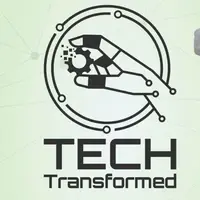

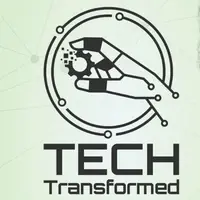
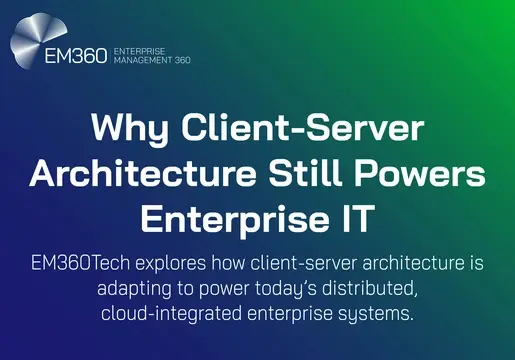


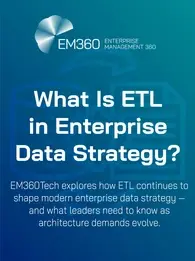
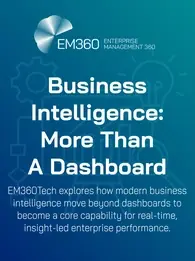
Comments ( 0 )